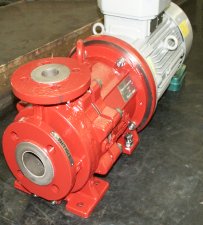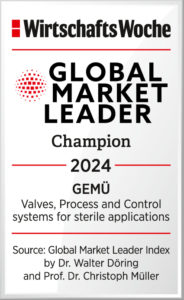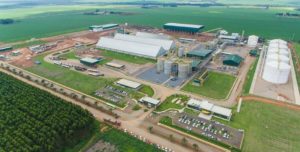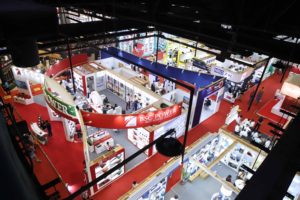Is the New Fluoroplastic PFA-P a Revolutionary Material?
This assessment would perhaps be somewhat presumptuous but for many plant operators PFA-P will lead to an equally significant prolongation of the service life of the pumps and valves used.
Linings made of the well-known thermoplastic fluoroplastic PFA (perfluoroalkoxy) have been used since roughly 1980 as an alternative to high-alloy, expensive metals for pumps, valves, control valves, containers etc. PFA has superseded PTFE, which is processed in a pressure sintering operation, in these cases to a large extent.
PFA's success is due to several important advantages over PTFE. PFA is processed in a transfer moulding operation and as a result the lining wall thicknesses can be accurately defined and reproduced. PFA is almost transparent and therefore permits much more reliable quality control.
Thanks to its dense molecular structure, PFA has generally much lower permeation rates than PTFE with the same wall thicknesses but it has the same chemical and thermal resistance properties. Porosity owing to production fluctuations are excluded. PFA is justifiably the material of first choice in applications with permeating media, as innumerable installations worldwide prove.
The barrier effect of pure PFA
We have now arrived precisely at the key issue: Even the good barrier effect of pure PFA with the usual wall thickness of +/- 3 mm is often not sufficient to achieve satisfactory service lives of the units with media which especially tend to permeate, such as chlorine, bromine or fluorine compounds: If the chemical penetrates the lining, this may cause corrosion on the pressure-bearing metal body and perhaps even failure of the unit.
Experience shows that an increase in the PFA lining wall thickness to 5-6 mm already produces substantially longer service lives. This is implemented, for example in ball and globe control valve bodies.
There is a quadratic relationship between the so-called breakthrough time and the wall thickness. This means that the time the medium takes to permeate through the plastic and emerge again increases in relation to the square of the wall thickness.
In most applications the breakthrough time is higher than the useful life of the units because the temperature and pressure gradients driving the permeation process decrease significantly towards the outside. This is also seen in pump housings where the PFA linings of 5-6 mm normally are particularly thick-walled anyway.
However, in the case of internal wetted components, such as shut-off elements, stems and pump shafts, inner magnetic assembly linings and cans, the wall thicknesses cannot be increased, or only to a very limited extent, for functional reasons. This is exactly where the weaknesses of the unit are.
The new development: PFA-P
The aim was therefore to provide a lining material even more resistant to permeation. The material engineers concentrated their efforts on creating a PFA variation which could be subjected to thermoplastic processing but with a much higher permeation resistance and with the same chemical resistance and temperature resistance up to 200°C.
With the compound PFA-P (the "-P" stands for permeation), a material is now available which satisfies these general conditions.
 An example from practice: TFA trifluoroacetic acid, 50°C
An example from practice: TFA trifluoroacetic acid, 50°C
The normal service life of a PFA-lined magnetic drive pump was roughly 3 months. The pump failed because the internals were heavily swollen by permeation. The metallic base material was attacked, the rotating unit stuck. The PFA-P-lined magnetic drive pump MNK has been running for 12 months without any indications of a change in the material.
General specification of the PFA-P
The carrier polymer PFA is enriched with an extremely corrosion-resistant filler. This filler extends the diffusion paths and acts as a diffusion barrier. The chemical properties of the carrier polymer PFA are not negatively affected. Interactions with highly permeating media are not known. The surface resistance of PFA-P as regards electric conductivity corresponds to that of PFA.
As a lining material, it covers the same pressure and temperature ranges as pure PFA for valves, globe control valves, pumps etc., i.e. from -60 to + 200°C and from vacuum up to 25 bar. Both the PFA base material and all fillers and auxiliary agents used in the production process are FDA-compliant.
Summary
The extraordinarily good suitability for use with highly permeating media makes PFA-P-lined pumps and valves interesting for a large circle of users. Moreover, the chemical and physical properties relevant to applications permit the use of PFA-P where pure PFA has proved successful.
In many cases it will already be sufficient to line individual components with PFA-P instead of with PFA or PTFE while the main part of the valve still remains lined with standard pure PFA. A general "all or nothing" policy is not advisable: The problem in question governs whether a PFA-P lining is necessary for the entire unit or only for critical components.
From the point of view of the operators of multi-purpose and pilot plants, standardisation towards these very universal pump and valve linings could also be appropriate.
Source: Richter Chemie-Technik GmbH







